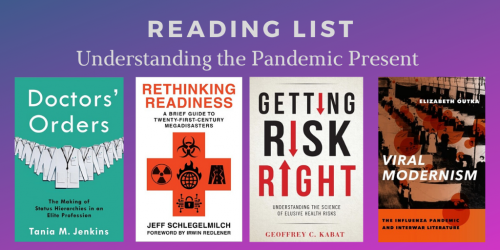The Other Pandemics: Air Pollution and Climate Change
By John Whysner

“The field of toxicology has become increasingly sophisticated as our knowledge of biology continues to evolve. As a scientist, it is enjoyable to read how John Whysner presents the information, and I have no doubt that the general public and students will find it equally enjoyable and informative.”
~Samuel M. Cohen, Havlik-Wall Professor of Oncology, University of Nebraska Medical Center
Since the dawn of the industrial age, we have unleashed a bewildering number of potentially harmful chemicals. But out of this vast array, how do we identify the actual threats? In The Alchemy of Disease: How Toxins and Chemicals Cause Cancer and Other Illnesses, John Whysner, MD, PhD, formerly associate clinical professor in the Environmental Health Sciences Department at Columbia University’s Mailman School of Public Health, offers an accessible and compelling history of toxicology and its key findings. In this guest post Whysner, who is also a board certified toxicologist, unveils two unfolding pandemics.
• • • • • •
Is the coronavirus 2019 (COVID-19) only the fourth pandemic since the 1918 flu? No. We have been living with two other slowly unfolding pandemics: diseases due to air pollution and climate change. Pandemic diseases are defined as occurring over a wide geographic area and affecting an exceptionally high proportion of the population. According to the World Health Organization (WHO), air pollution and climate change top the list of global health threats.
Do air pollution and climate change share features with the coronavirus? Yes and no. All these threats are usually invisible. No one can see the virus with their eyes, so our senses can’t warn us to protect ourselves. The same can be said for climate change, except for some of the extreme storms that it causes. Most of the time it is invisible. Types of air pollution can be seen when there are weather events that cause it to be concentrated, but, again, air pollution is mostly invisible.
In contrast to the coronavirus, air pollution has crept slowly from its epicenters in major cities, sustained by the spread of fossil fuel production and consumption. Growing up in Los Angeles in the 1950s, I only had to take a deep breath to understand that something was hurting my lungs. What I was feeling was smog mainly due to ozone produced in the atmosphere from automobile exhaust. It took decades for the same effects to spread to parts of the globe such as Mexico City, New Delhi, and Beijing. The same is true for the burning of coal. The use of coal for heat in households led to the notable pollution described by Charles Dickens, living in London during the nineteenth century. Today, coal’s production of electricity has led to pollution in many of world’s major cities.
“We are at the beginning of the pandemic of diseases caused by climate change.”
We are at the beginning of the pandemic of diseases caused by climate change. Climate change is estimated to be responsible for 250,000 deaths per year in the world from malnutrition, malaria, diarrhea, and heat stress. Fatalities are expected to rise dramatically in the coming years and eventually to have catastrophic effects on our lives and those of our children. The causes of this pandemic have spread from the developed to the underdeveloped world where some of the worst impacts will appear.
Another concept worth considering is comorbidity, defined as the simultaneous presence of two diseases or conditions in a patient. Asthma, emphysema, atherosclerosis, and congestive heart disease are only some conditions caused by the fossil fuel pollutants such as sulfur dioxide, ozone, particulates, and nitrogen oxides. These pollutant-related chronic lung and cardiovascular diseases affect significant numbers of people and will lead to the premature death of COVID-19 patients.
“The World Health Organization estimated that 7 million people per year are killed prematurely by air pollution causing cancer, stroke, heart and lung disease.”
An important observation is that air pollution and climate change have a common cause: fossil fuels. Whether it’s the burning of coal or natural gas that produce air pollutants and greenhouse gases or the direct release of methane into the atmosphere through fracking, the development and use of fossil fuels is the root cause of both pandemics. This is not a new concept. Bernard Goldstein, then at the Robert Wood Johnson Medical School, and Donald Reed of Oregon State University noted this linkage in 1991. In 1997, studies of the health effects from fossil fuels and climate change were published by the Working Group on Public Health and Fossil-Fuel Combustion organized by Devra Lee Davis of the World Resources Institute.
The World Health Organization estimated that 7 million people per year are killed prematurely by air pollution causing cancer, stroke, heart and lung disease. Worldwide ambient air pollution accounts for 29 percent, 24 percent, 25 percent, and 43 percent of all deaths from lung cancer, stroke, ischemic heart disease, and emphysema, respectively. The COVID-19 death toll is an unknown and may approach that of air pollution; so I am not downplaying this pandemic’s effects on our health and economy. Nevertheless, I wonder how much better our well-being could be if we focused with the same urgency on the pandemics caused by fossil fuels. Regrettably, when these other pandemics evolve so slowly, we don’t seem to notice.







